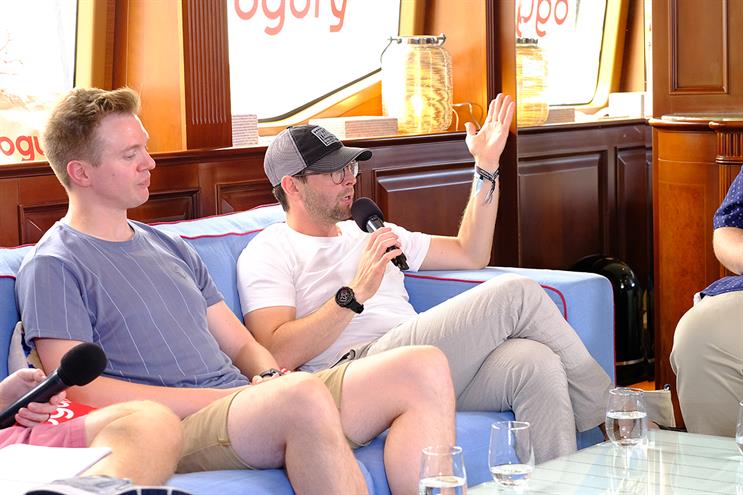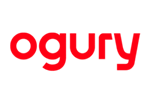
There’s always someone in Adtech, somewhere, having a heated discussion about arbitrage, it’s a question that attracts strong opinions.
To try and get to the bottom of the issue, leading advertising tech company Ogury convened a panel of advertising and media specialists, with Jonathon Matthews, Ogury’s VP Publisher development in the US, chairing.
“I think of it as like an envelope with stamps,” said Mike Brooks, SVP of Revenue and Marketing, WeatherBug, when asked to define the Adtech tax. “You want to attach the right amount of stamps so that the parcel reaches its destination. But at some point, it’s too many and you’re just wasting money. So, what is the right amount of money to spend on Adtech?”
 Oleg Korenfeld, the CTO of CMI Media Group, brought up the issue of brand safety. “I’m not sure why both sides of the coin need to pay, often the same company, to validate the same impression.”
Oleg Korenfeld, the CTO of CMI Media Group, brought up the issue of brand safety. “I’m not sure why both sides of the coin need to pay, often the same company, to validate the same impression.”
“Along with brand safety,” said Alex Payne, VP ad operations at Vice Media Group, “the other aspect of quality inventory is viewability. There are lots of vendors out there measuring the same space with the same technology. That’s also a tax on the publisher and the advertiser. I feel there needs to be trust in a solution that provides that report in one place, to the publisher. Not both sides comparing and contrasting.”
Losing weight around the middle
Matthews pointed out that his company has deliberately designed itself to be the middleman, eliminating the need for other intermediaries, to try and help advertisers and publishers avoid this problem of duplication. But he questioned whether the industry had the right level of trust, or even a common definition of trust, to help cooperation across different functions and business models.
“That’s the frustrating part,” said Korenfeld, “this is all supposed to be automated. But before we automate, we need to build trust. And some people, if something is completely automated, will use that as an excuse to create hidden tolls. So, we often go back to manual processes, before we create an automated marketplace. We do this to build trust.”
 “I feel like big buyers can set the market to a certain extent,” said Brooks. “One of the challenges with trust is where does that autonomy sit. Who sets the standard? Is it the IAB? Is it Google!? To make things sustainable, we have to understand where that autonomy sits.”
“I feel like big buyers can set the market to a certain extent,” said Brooks. “One of the challenges with trust is where does that autonomy sit. Who sets the standard? Is it the IAB? Is it Google!? To make things sustainable, we have to understand where that autonomy sits.”
Doing it yourself
Payne talked about the usefulness of contextual targeting. “At Vice, we’ve welcomed the shift to contextual advertising for a few years now. We were early adopters of brand safety, for obvious reasons. And we consider contextual targeting as a live audience. When we speak about trust, there’s trust in understanding what that user is doing at that time. We can measure this and then target based on it. When we were relying on third-party data, I just didn’t trust it.”
 “For us in the subscription world,” said Brooks, who was addressing another way to build or create trust “We have challenges. We have been ad supported forever. Our [company’s] job is to keep people safe and aware. But only if they have paid two dollars a month to get behind the paywall? So, you have to pay two dollars to know if a tornado is going to wreck your house. We do a lot of extra product work on the mission alignment.”
“For us in the subscription world,” said Brooks, who was addressing another way to build or create trust “We have challenges. We have been ad supported forever. Our [company’s] job is to keep people safe and aware. But only if they have paid two dollars a month to get behind the paywall? So, you have to pay two dollars to know if a tornado is going to wreck your house. We do a lot of extra product work on the mission alignment.”
Here to help
“From an Ogury perspective,” said Matthews, “we have been prepared for the end of the cookies for quite some time. So, what we do is we run a regular engagement unit. This authenticates and validates the audiences our clients want to address. And that’s worked for us. And we have been able to build home-grown audience segments to use in targeting for our clients, without the need for intrusive personal data collection.”
The panel: Jonathon Matthews, VP publisher development US, Ogury (moderator); Alex Payne VP ad operations, Vice Media Group; Mike Brooks, SVP of revenue and marketing, WeatherBug; Oleg Korenfeld CTO, CMI Media Group.


